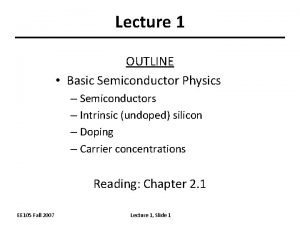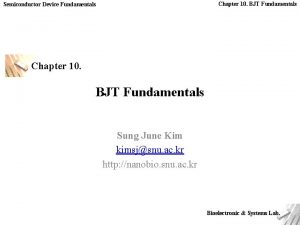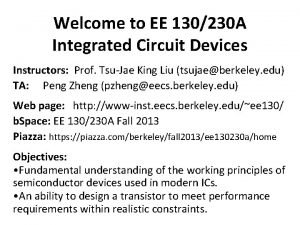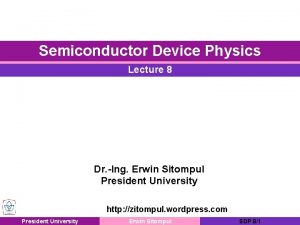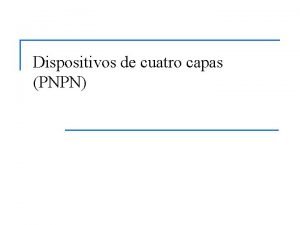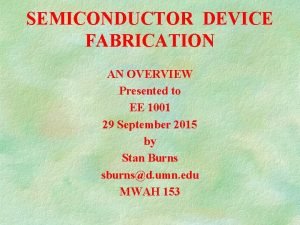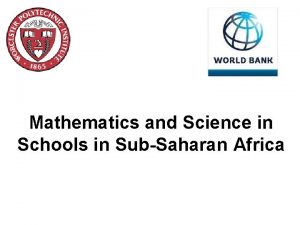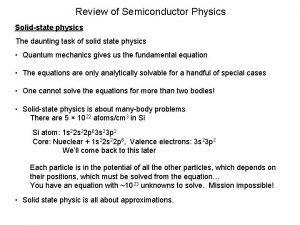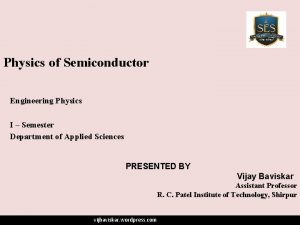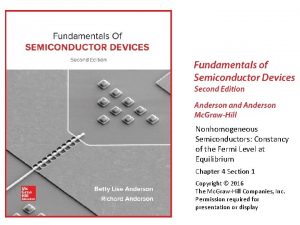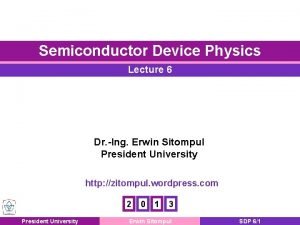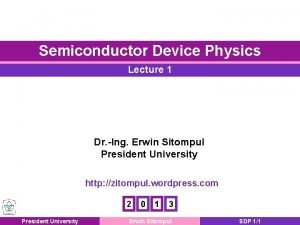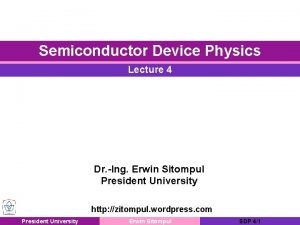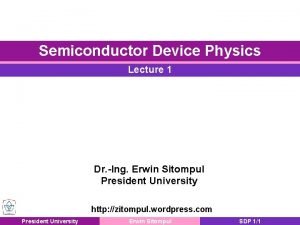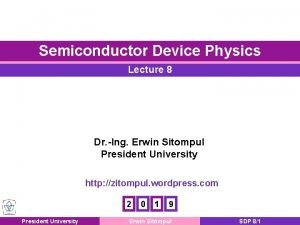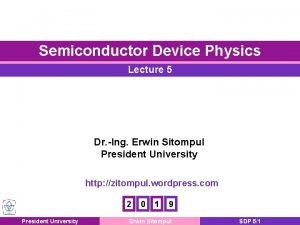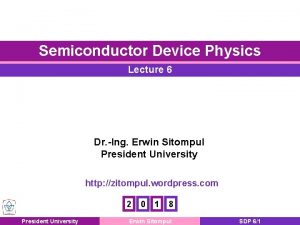Semiconductor Device Physics Lecture 11 Dr Ing Erwin














- Slides: 14

Semiconductor Device Physics Lecture 11 Dr. -Ing. Erwin Sitompul President University http: //zitompul. wordpress. com President University Erwin Sitompul SDP 11/1

Chapter 12 BJT Dynamic Response Modeling President University Erwin Sitompul SDP 11/2

Chapter 12 BJT Dynamic Response Modeling Qualitative Transient Response Saturation (ON) Load line Idealized switching circuit President University Cut-off (OFF) Erwin Sitompul SDP 11/3

Chapter 12 BJT Dynamic Response Modeling Qualitative Transient Response 1 cutoff 2 3 active saturation 4 2 5 1 saturation 3 4 5 active President University Erwin Sitompul SDP 11/4

Chapter 12 BJT Dynamic Response Modeling Charge Control Relationships n A pnp BJT biased in the active mode has excess minoritycarrier charge QB stored in the quasineutral base. n While Small n In steady state, President University Interpreted as average lifetime of an excess minority carrier Erwin Sitompul SDP 11/5

Chapter 12 BJT Dynamic Response Modeling Base Transit Time tt (Active mode) Interpreted as average time taken by minority carriers to diffuse across the quasineutral base President University Erwin Sitompul SDP 11/6

Chapter 12 BJT Dynamic Response Modeling Relationship between t. B and tt The lifetime of a minority carrier before it recombines in the base is much longer than the time it requires to cross the quasineutral base region President University Erwin Sitompul SDP 11/7

Chapter 12 BJT Dynamic Response Modeling Example n Given an npn BJT with W = 0. 1 μm and NB = 1017 cm-3. Find tt. From Figure 3. 5, mn = 801 cm 2/(V s) President University Erwin Sitompul SDP 11/8

Chapter 12 BJT Dynamic Response Modeling Turn-On Transient n During the turn-on transient: n The general solution is: n Initial condition: QB(0)=0, since transistor is in cutoff: tr : rise time, period of active mode President University Erwin Sitompul SDP 11/9

Chapter 12 BJT Dynamic Response Modeling Turn-On Transient IBBt. B > ICCtt bdc IBB > ICC bdc > ICC/IBB n In saturation mode: bdc > bdc(saturation) President University Erwin Sitompul SDP 11/10

Chapter 12 BJT Dynamic Response Modeling Turn-Off Transient n During the turn-off transient: n The general solution is: n Initial condition: QB(0)=IBBt. B: tsd : storage delay time President University Erwin Sitompul SDP 11/11

Chapter 12 BJT Dynamic Response Modeling Turn-Off Transient n The transient speed of a BJT depends on the amount of excess minority-carrier charge stored in the base and also the recombination lifetime t. B. n By reducing t. B, the carrier removal rate is increased, for example by adding recombination centers (Au atoms) in the base. n Tradeoff: bdc= t. B/tt will decrease. President University Erwin Sitompul SDP 11/12

Chapter 12 BJT Dynamic Response Modeling Practical Considerations n The foregoing analysis was highly simplified to avoid excessive amount of mathematics. n More realistic i. C transient response is shown below. n Added delay time td (due to charging of junction capacitance) and fall time tf. Collector current (mathematical model) Collector current (actual form) President University Erwin Sitompul SDP 11/13

Chapter 12 BJT Dynamic Response Modeling Homework 8 n 1. (Int. 0) A pnp BJT has αF = 0. 99, αR = 0. 1, and IF 0 = 10– 16 A. If VBC = – 0. 68 V and IC = 0. 1 m. A, determine the mode of the device and the value of IB using the Ebers-Moll model. n Deadline: 05. 07. 2012, at 08: 00 am. President University Erwin Sitompul SDP 11/14
 Input device output device storage device
Input device output device storage device Basic semiconductor physics:
Basic semiconductor physics: Power semiconductor devices lecture notes
Power semiconductor devices lecture notes Zerobioelectronic
Zerobioelectronic Semiconductor device fundamentals
Semiconductor device fundamentals Semiconductor device fundamentals
Semiconductor device fundamentals Dispositivo semiconductor de 4 capas con 3 terminales
Dispositivo semiconductor de 4 capas con 3 terminales Semiconductor device fabrication
Semiconductor device fabrication Semiconductor
Semiconductor Wigner seitz cell of fcc
Wigner seitz cell of fcc Semiconductor engineering physics
Semiconductor engineering physics Introduction to semiconductor physics
Introduction to semiconductor physics Classification of semiconductor
Classification of semiconductor 01:640:244 lecture notes - lecture 15: plat, idah, farad
01:640:244 lecture notes - lecture 15: plat, idah, farad Physics 111 lecture notes
Physics 111 lecture notes

